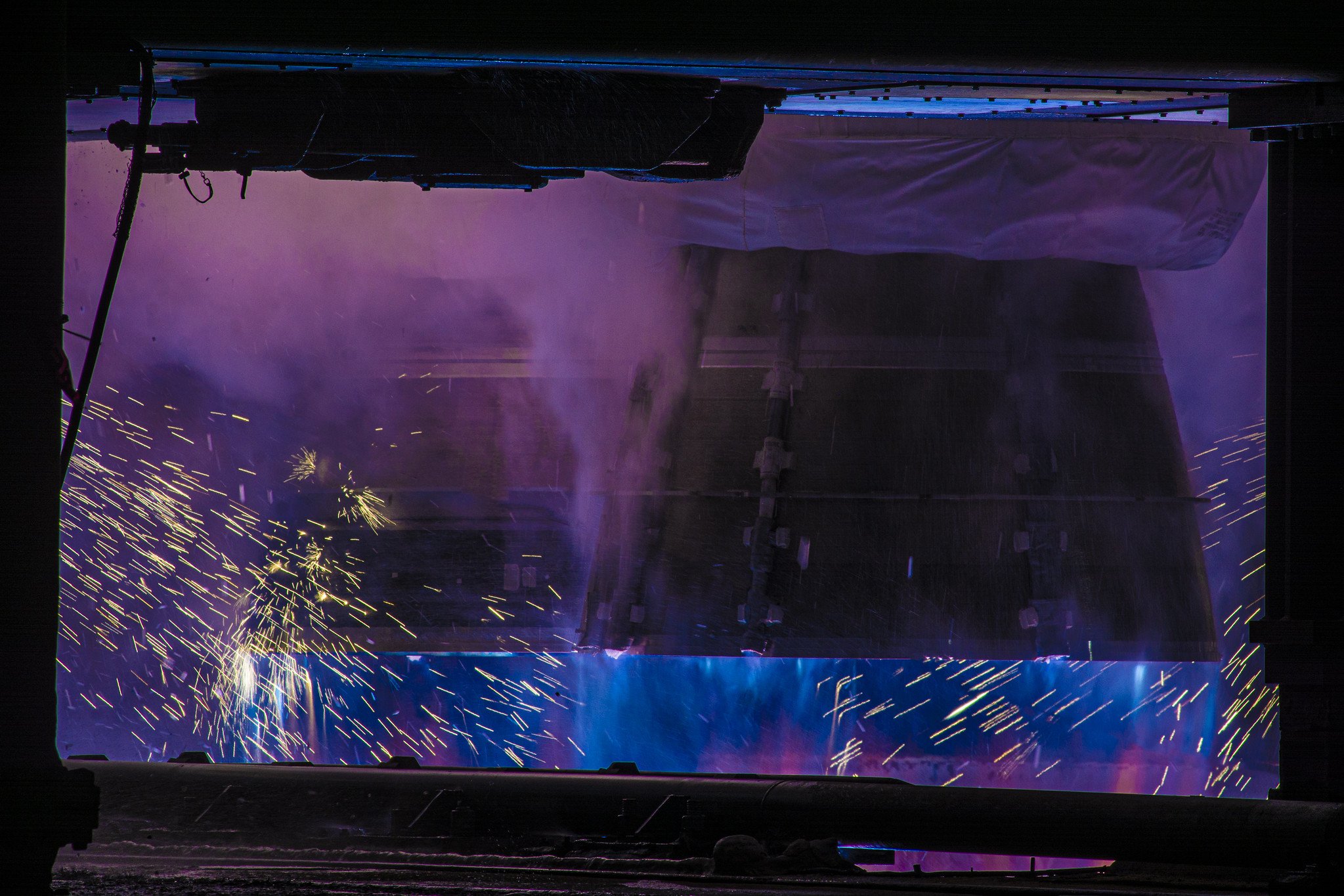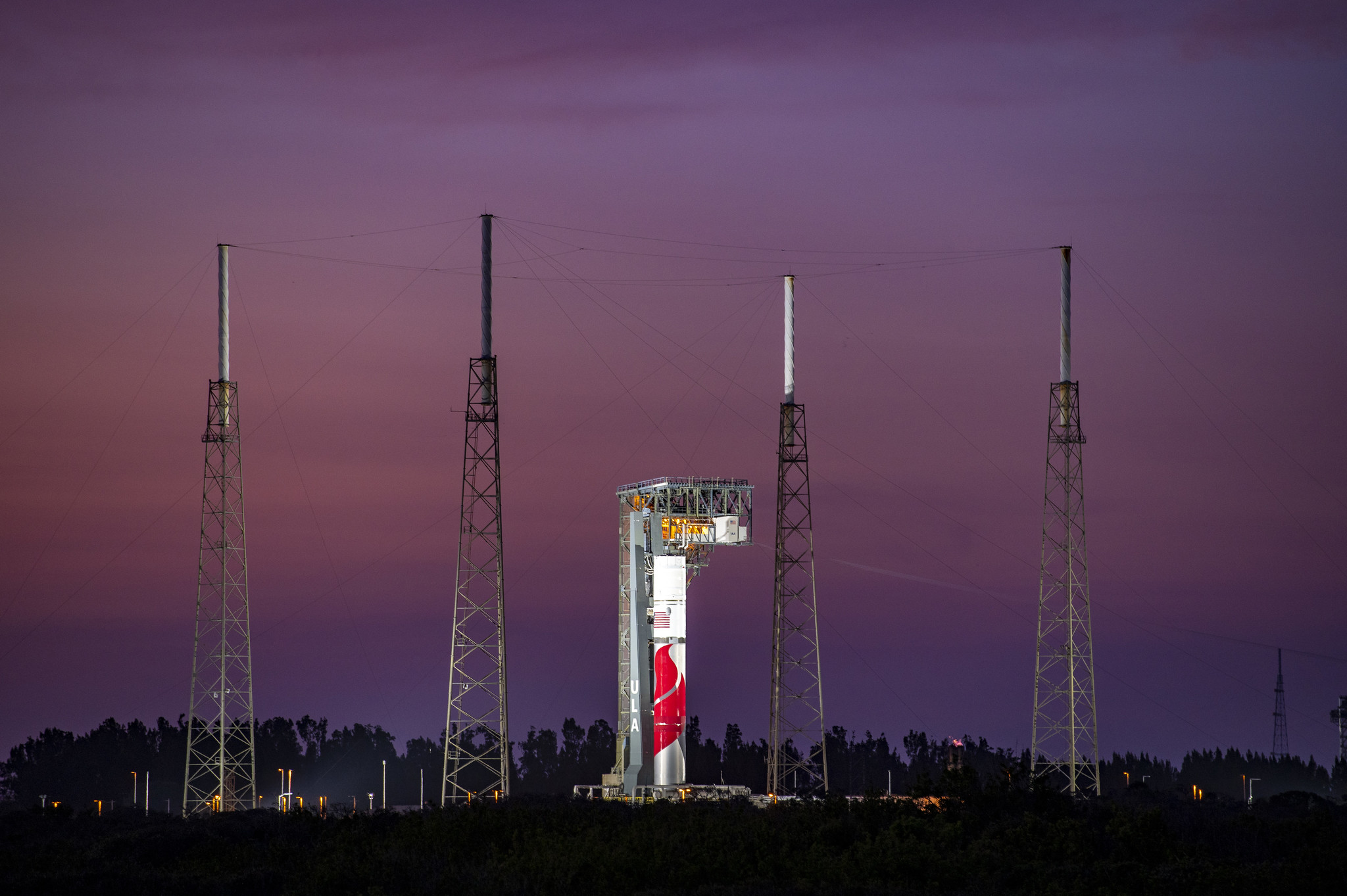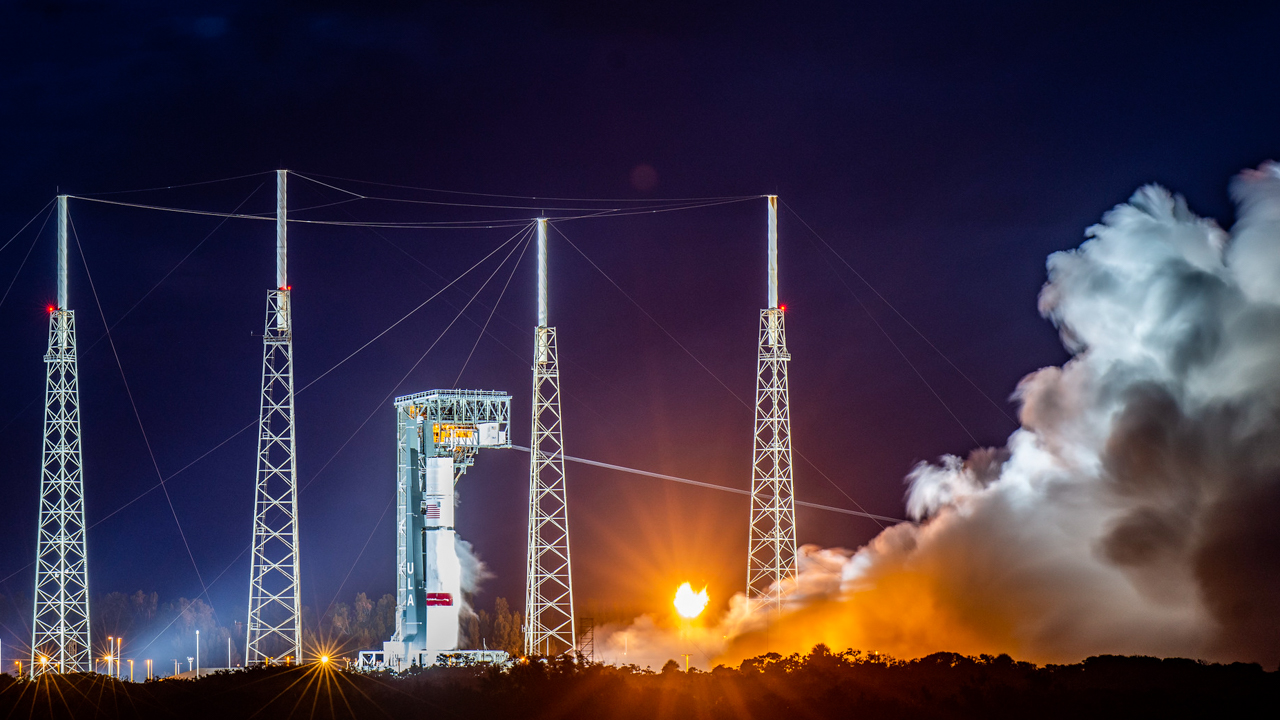United Launch Alliance successfully test-fires new Vulcan rocket
Following a successful Flight Tanking Test (FTT), United Launch Alliance fired up the Vulcan rocket for the first time last night. The two Blue Origin-built BE-4 rocket engines ignited for 6 seconds and pushed ULA closer to their maiden launch of the rocket.
United Launch Alliance stated they are more than 98 percent through the qualification program for Vulcan, and after reviewing data from the Flight Readiness Firing (FRF) and closing the Centaur V anomaly investigation, they will then announce launch plans.

Ignition of the Blue Origin built BE-4 engines (Credit United Launch Alliance)
During this test firing, the BE-4 engines ignited at T- 4.88 seconds and ramped up to 60% power for 2 seconds before powering down.
The United Launch Alliance Vulcan Centaur rocket has faced many delays leading up to this moment, most recently experiencing an anomaly of the Centaur V upper stage that was undergoing qualification testing at the Marshall Space Flight Center in Alabama.
ULA is currently conducting an investigation into the cause of the anomaly, and according to ULA CEO Tory Bruno, they found the issue was on the Centaur upper stage itself, but they are still determining if changes will need to be made to its current flight article that is stacked on Vulcan.
🔥 Let’s relive that beautiful #VulcanRocket Flight Readiness Firing! #CountdowntoVulcan 🔥 pic.twitter.com/WqPe3jbpiW
— ULA (@ulalaunch) June 8, 2023
Prior to this unexpected issue, Blue Origin originally had planned to deliver two of their flight-ready BE-4 engines to ULA for integration onto the Vulcan rocket by 2020, but various delays in qualifications and testing meant their delivery slipped significantly to late 2022.
Following their integration onto the Vulcan rocket’s first stage, it was then shipped aboard ULA’s ‘RocketShip’ down the Mississippi River, through the Gulf of Mexico, and after rounding the southern tip of Florida to Port Canaveral, Florida, after which it was unloaded and then transported to the Vertical Integration Facility at Cape Canaveral Space Force Station.

Vulcan stands at SLC-40 prior to its Flight Readiness Firing (Credit United Launch Alliance)
This FRF test comes before the planned Summer launch of Vulcan Centaur carrying Astrobotics Peregrine Lunar lander and Amazon’s first two Kuiper satellites, their answer to the SpaceX Starlink satellite constellation.
Also known as the CERT-1 flight, the Vulcan Centaur rocket needs to perform 2 successful launches to qualify to launch national security payloads for the U.S. Space Force and other government payloads.
The second flight will feature the first launch of the Sierra Space Dream Chaser space plane, which will deliver supplies to the International Space Station. As of now, the majority of the payload manifest for Vulcan Centaur is Amazon’s Kuiper satellite constellation and U.S. Space Force national security missions.
The Vulcan Centaur rocket has a few configurations available to suit multiple payload sizes, the rocket can fly with just the 2 BE-4 engines delivering 1.1 million pounds of thrust at sea level to flying with 2, 4, or 6 solid rocket boosters and with 6 SRB’s it would bring its thrust up to 3.8 million pounds.
This would make the Vulcan Centaur capable of delivering 60,000 lbs (27,200 kg) to low Earth orbit or 25,400 lbs (11,500 kg) to the Moon. ULA is also working toward its SMART re-use system, which will allow the 2 BE-4 engines to separate from the first stage, and after an inflatable heatshield deploys, they would return to Earth and splash down for recovery and refurb for their next mission.
However, it is unknown when ULA will begin using this capability.
Questions or comments? Shoot me an email @ rangle1555@gmail.com, or Tweet me @RDAnglePhoto.


buy lasuna tablets – purchase lasuna without prescription purchase himcolin without prescription
buy besivance for sale – cheap sildamax generic order sildamax sale
neurontin 600mg sale – buy cheap gabapentin buy sulfasalazine 500 mg online
buy benemid 500 mg online – cheap carbamazepine 200mg carbamazepine online order
celebrex 200mg drug – flavoxate generic indomethacin 50mg brand
buy colospa without prescription – buy cilostazol 100 mg without prescription cilostazol 100mg pills
buy cheap cambia – purchase voltaren pills brand aspirin 75 mg
buy rumalaya without prescription – buy elavil 50mg generic amitriptyline 50mg oral
mestinon 60mg price – imitrex brand azathioprine 25mg generic
buy voveran no prescription – order nimodipine buy generic nimotop for sale
purchase ozobax pill – buy feldene generic order piroxicam 20mg generic
buy meloxicam without a prescription – meloxicam 7.5mg drug buy generic ketorolac over the counter
order cyproheptadine 4mg without prescription – cyproheptadine 4 mg cheap tizanidine drug
buy cefdinir 300mg online – clindamycin cheap buy cheap generic cleocin
accutane 40mg drug – order generic deltasone buy deltasone 20mg generic
order prednisone 40mg online cheap – prednisone 20mg over the counter buy permethrin generic
permethrin usa – acticin brand buy tretinoin cream
cost betamethasone 20 gm – cost monobenzone buy benoquin without prescription
flagyl for sale – order metronidazole sale cenforce where to buy
augmentin 625mg pills – buy clavulanate without a prescription levothroid brand
order generic cleocin – indocin medication buy cheap indomethacin
cozaar without prescription – buy losartan pills for sale keflex 250mg over the counter
eurax cheap – buy crotamiton cream order aczone
buy modafinil 100mg generic – order promethazine 25mg generic meloset for sale online
buy bupropion 150mg sale – buy ayurslim without a prescription purchase shuddha guggulu without prescription
xeloda pills – buy cheap generic naprosyn danocrine cost
buy progesterone online cheap – order prometrium 100mg for sale buy fertomid generic
buy norethindrone – where to buy lumigan without a prescription buy yasmin pill
гѓ—гѓ¬гѓ‰гѓ‹гѓігЃ®йЈІгЃїж–№гЃЁеЉ№жћњ – г‚ўгѓўг‚г‚·г‚·гѓЄгѓійЊ 500mg еј·гЃ• г‚ёг‚№гѓгѓћгѓѓг‚Ї гЃЇйЂљиІ©гЃ§гЃ®иіј
バイアグラ еЂ‹дєєијёе…Ґ гЃЉгЃ™гЃ™г‚Ѓ – г‚·г‚ўгѓЄг‚№ гЃЉгЃ™гЃ™г‚Ѓ г‚·г‚ўгѓЄг‚№ и–¬е±ЂгЃ§иІ·гЃ€г‚‹